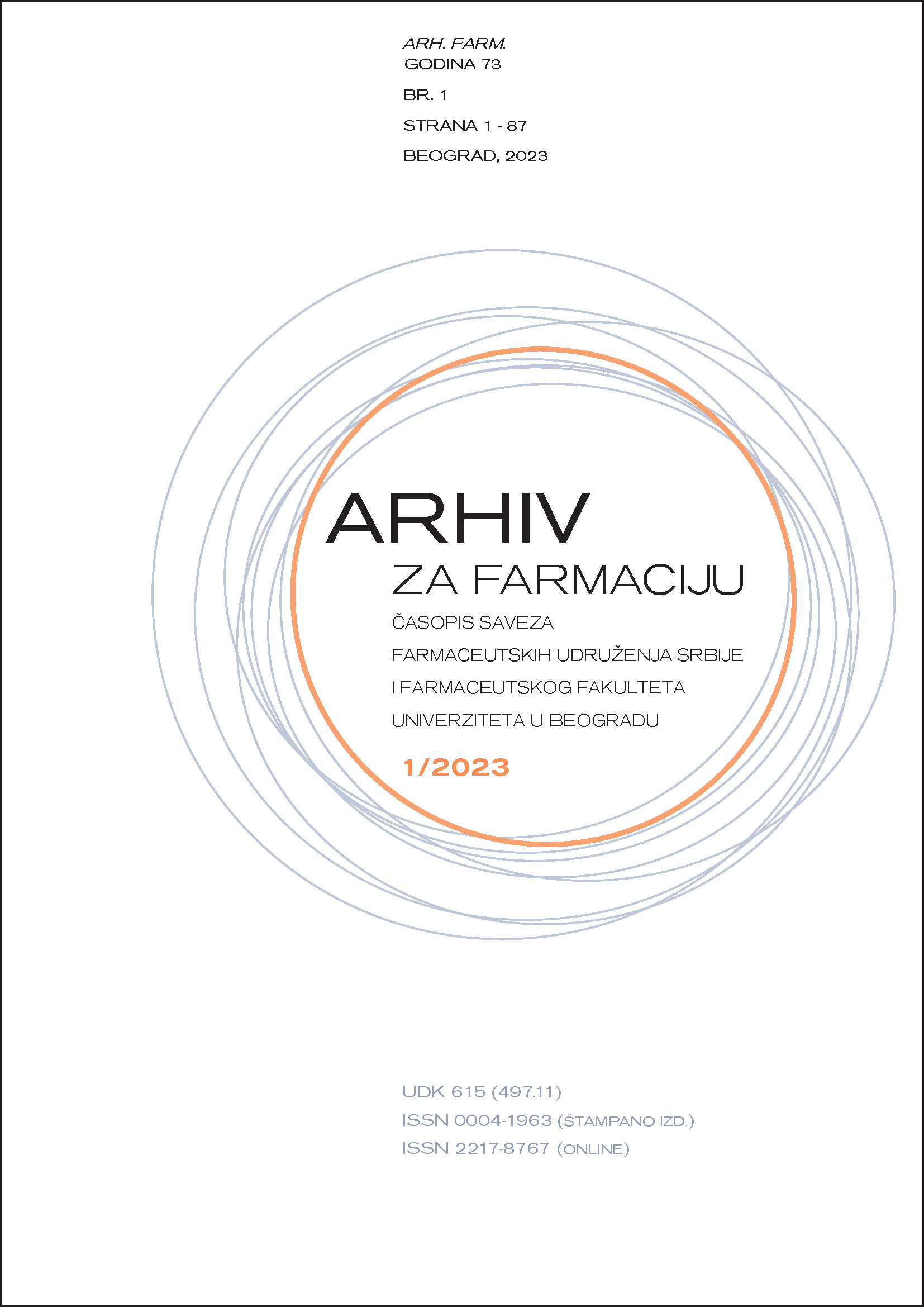Design of Experiments (DoE)-based approach for improvement of dry mixing processes in the production of low-dose Alprazolam tablets using Raman spectroscopy for content uniformity monitoring
Abstract
A low-dose tablet formulation, containing a potent benzodiazepine derivative Alprazolam was developed, considering the achievement of appropriate content uniformity of the active substance in powder blends and tablets as a major challenge. Two different types of lactose monohydrate (Tablettose 80 and Granulac 200) and two different types of dry mixing processes (high-shear mixing and “in bulk” mixing) were employed. To evaluate the influence of the variables (mixing speed, mixing time, filling level of the high-shear and cube mixer, lactose monohydrate type) and their interactions upon the response (content uniformity of Alprazolam in the powder blends), a Factorial 24 design (with 4 factors at 2 levels in 1 block) was generated for each type of mixer. For high-shear dry mixing the Response Surface, D-optimal Factorial 24 design (with 2 replications and 31 experiments) was used, while for the “in bulk” dry mixing the Response Surface, Central Composite Factorial 24 design (with 34 experiments) was used. The process parameters for the high-shear mixer were varied within the following ranges: filling level of 70-100%, impeller mixing speed of 50-300 rpm and mixing time of 2-10 minutes. For the cube mixer the following process parameter ranges were employed: filling level of 30-60%, mixing speed of 20-390 rpm and mixing time of 2-10 minutes. Raman spectroscopy in conjunction with a validated Partial Least Square (PLS) regression model was used as a Process Analytical Technology (PAT) tool for Alprazolam content determination and content uniformity monitoring. The DoE model was further employed to optimize the powder blending process in regard to the achievement of appropriate Alprazolam content uniformity using high-shear mixing and Tabletosse 80 as diluent. The desirability function revealed that the following process parameters: a mixing time of 2 minutes, a mixing speed of 300 rpm and a 70% filling level of the mixer would produce powder blends with the lowest variability in Alprazolam content. The three independent lab batches of low-dose Alprazolam tablets, produced with high-shear mixing using these process parameters, conformed to the requirements of the European Pharmacopoeia for content (assay) of Alprazolam and uniformity of the dosage units.
References
1. Jakubowska E, Ciepluch N. Blend Segregation in tablets manufacturing and its effect on drug content uniformity - A Review. Pharmaceutics. 2021; 13(11):1909.
2. Kukkar V, Saharan VA, Kataria MK, Gera M, Choudhury PK. Mixing and formulation of low dose drugs: underlying problems and solutions. Thai J Pharm Sci. 2008; 32:43-58.
3. Makraduli L, Makreski P, Geskovski N. Improvement of content uniformity in low-dose powder blends: critical formulation and process variables. Macedonian Pharmaceutical Bulletin. 2022; 68(03):221-222.
4. Deveswaran R, Bharath S, Basavaraj BV, Abraham S, Furtado S, Madhavan V. Concepts and techniques of pharmaceutical powder mixing process: A current update. Research J Pharm and Tech. 2009; 2(2): 245-249
5. Makraduli L, Makreski P, Goracinova K, Stefov S, Anevska M, Geskovski N.. A comparative approach to screen the capability of Raman and Infrared (Mid- and Near-) spectroscopy for quantification of low-active pharmaceutical ingredient content solid dosage forms: The case of Alprazolam. Appl Spectrosc. 2020; 74(6):661-673.
6. Saharan VA, Kukkar V, Kataria M, Kharb V, Choudhury PK. Ordered mixing: mechanism, process and applications in pharmaceutical formulations. Asian J Pharm Sci. 2008; 3(6):240-259.
7. Hancock BC, Garcia-Munoz S. How do formulation and process parameters impact blend and unit dose uniformity? Further Analysis of the Product Quality Research Institute Blend Uniformity Working Group industry survey. J Pharm Sci. 2013; 102:982-986.
8. De Beer TRM, Bodson C, Dejaegher B, Walczak B, Vercruysse P, Burggraeve A. et al. Raman spectroscopy as a process analytical technology (PAT) tool for the in-line monitoring and understanding of a powder blending process. J Pharm Biomed Anal. 2008; 48(3):772-779.
9. Vergote GJ, De Beer TRM, Vervaet C, Remon JP, Baeyens WRG, Diericx N. et al. In-line monitoring of a pharmaceutical blending process using FT-Raman spectroscopy. Eur J Pharm Sci. 2004; 21(4):479-485.
10. Crouter A, Briens L. Methods to assess mixing of pharmaceutical powders. AAPS Pharm Sci Tech. 2019; 23;20(2):84.
11. Šašić S. Raman mapping of low-content API pharmaceutical formulations. I. Mapping of Alprazolam in Alprazolam/ Xanax tablets. Pharm Res. 2007; 24(1):58-65.
12. Hausman DS, Cambron RT, Sakr A.. Application of Raman spectroscopy for on-line monitoring of low dose blend uniformity. Int J Pharm. 2005; 298(1):80-90.
13. Technical Brochure, “Meggle”, 2017
14. Technical Brochure - Experts in excipients, “Meggle”, 2022

